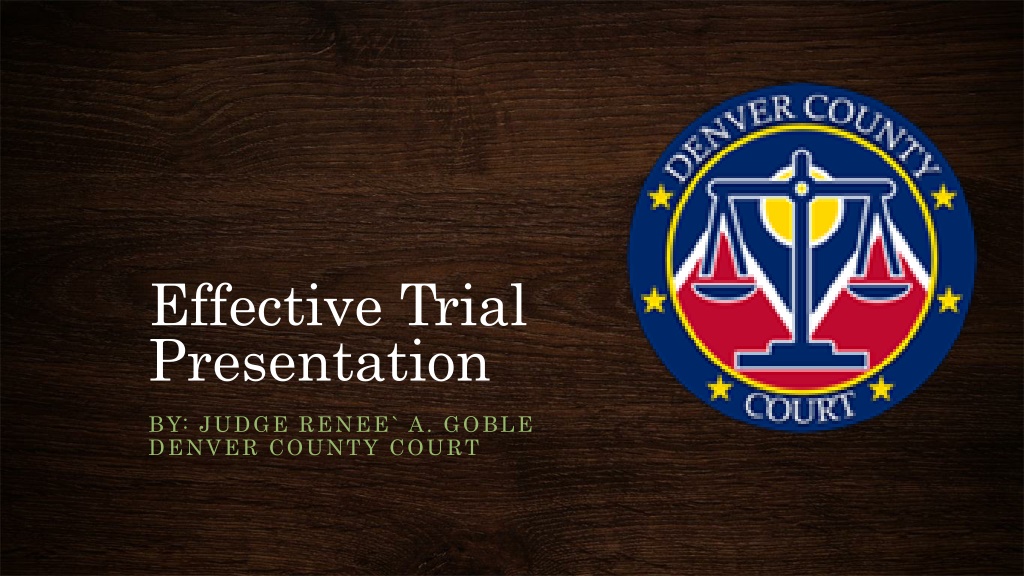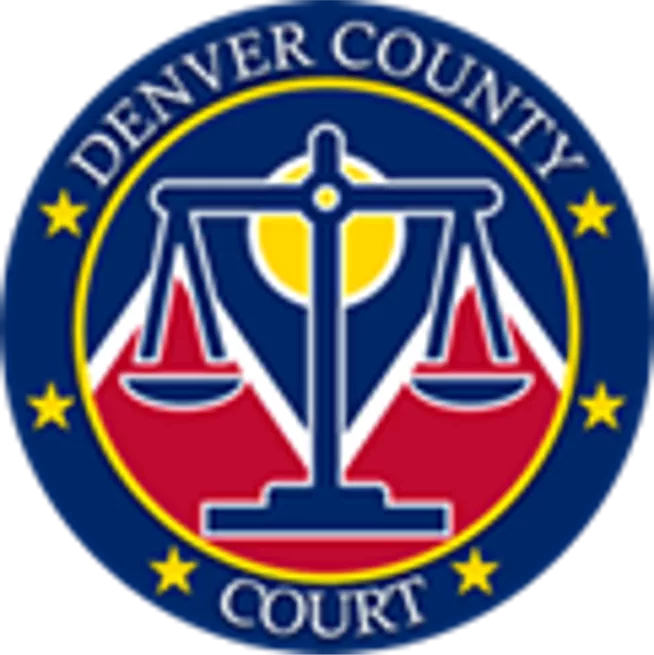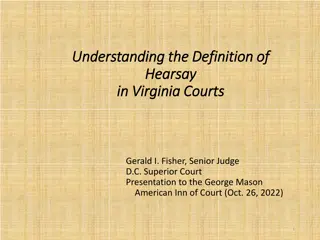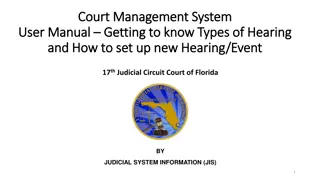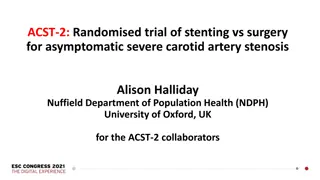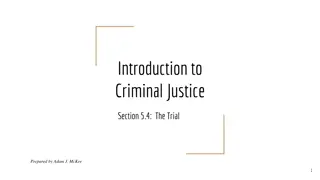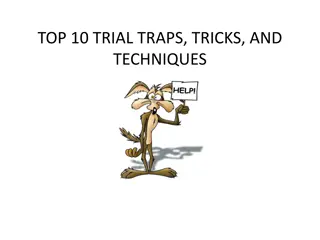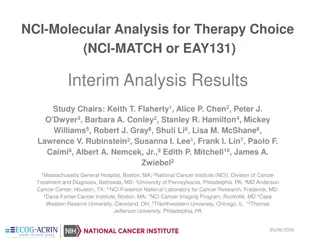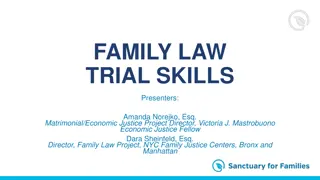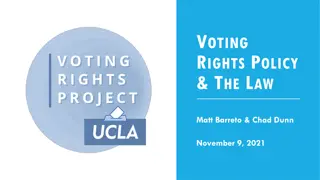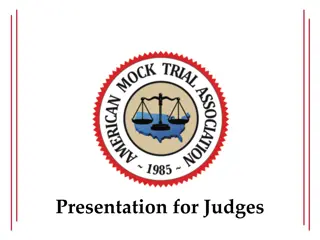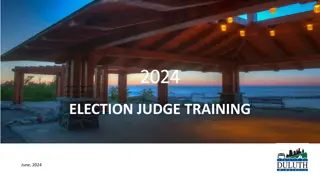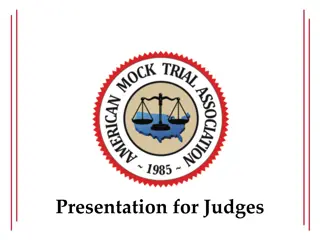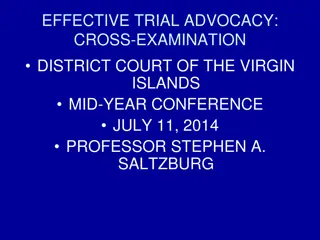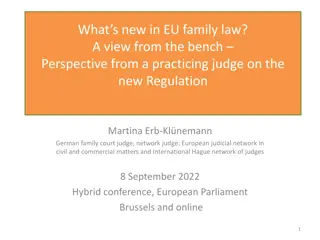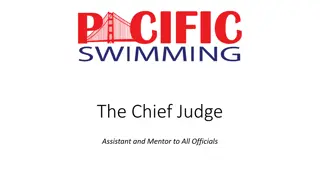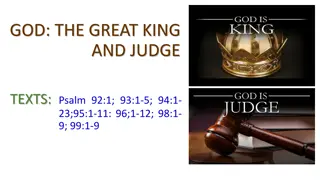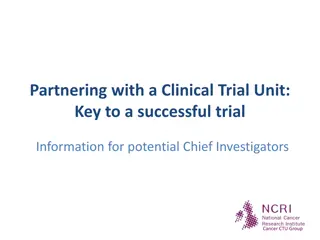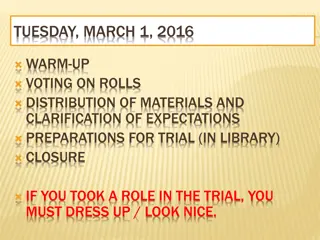Effective Trial Presentation Tips and Best Practices by Judge Renee A. Goble
Enhance your trial presentation skills with insights from Judge Renee A. Goble of Denver County Court. Learn about trial structure, direct and cross-examination techniques, understanding evidence, objections, and more to improve your courtroom performance.
Download Presentation

Please find below an Image/Link to download the presentation.
The content on the website is provided AS IS for your information and personal use only. It may not be sold, licensed, or shared on other websites without obtaining consent from the author. Download presentation by click this link. If you encounter any issues during the download, it is possible that the publisher has removed the file from their server.
E N D
Presentation Transcript
Effective Trial Presentation BY: JUDGE RENEE` A. GOBLE DENVER COUNTY COURT
Best Practices for Trial Trial Process Evidence Objections Record on Appeal Jury Instructions
https://youtu.be/An2xQ2SrNSI?t=192 BE PREPARED DON T WASTE TIME
Trial is: Opportunity to tell your/your client s story Give the Judge/Jury FACTS Facts are applied the law and a decision is reached
Structure of a Trial 1. Opening = short summary of facts (3-5 min.) 2. Plaintiff goes first because they have the Burden of Proof = Preponderance of Evidence (more likely that not) Witnesses subpoena power Exhibits documents, pictures, video, text messages 3. Defendant goes second to present defense or counterclaims Witnesses subpoena power Exhibits documents, pictures, video, text messages 4. Closing = summary of facts as applied to law and explain what you/client wants and why you win. (5-10 min.)
Direct Examination https://youtu.be/t6jPu9NWeGQ?t=4 1 Let the witness testify Ask open-ended questions: Who, what when, where, why, how, does, did?
Cross https://youtu.be/02hSDh4hSpA?t=6 3 Examination Short Leading Questions Make them agree with you and say, yes Isn t it true the sky is blue? You agree with me that pizza has cheese on it? Get to the point! Don t repeat yourself
What is Evidence? 1. Testimonial Direct and Cross examination 2. Demonstrative illustrates witness testimony; ie. diagrams, pictures maps, video 3. Documentary contracts, emails, 4. Real i.e. weapon, clothing, car
How do you get Evidence in the Record? Colorado Rules of Evidence Testimony Exhibits Stipulated Facts
OBJECTION! Types of Objections: Relevance Hearsay Speculation Compound Vague Authentication Foundation Leading Asked & Answered
Bring copy of media on flash drive to play on computer 3 copies of all Exhibits Plaintiff uses # Defendant uses letters Exhibits and disclosures are different things Court must keep copies for the Record Organize exhibits I love binders
Record on Appeal Speak into microphone clearly Don t talk over each other, especially the JUDGE! Pause for objections and rulings on objections Make sure all exhibits are entered, including video and flash drives
Jury Instructions Jury instruction conferences DCC has a stock instructions, use them. Stipulate to jury instructions Jury instructions due 7 days before trial Be prepared Don t waste time
